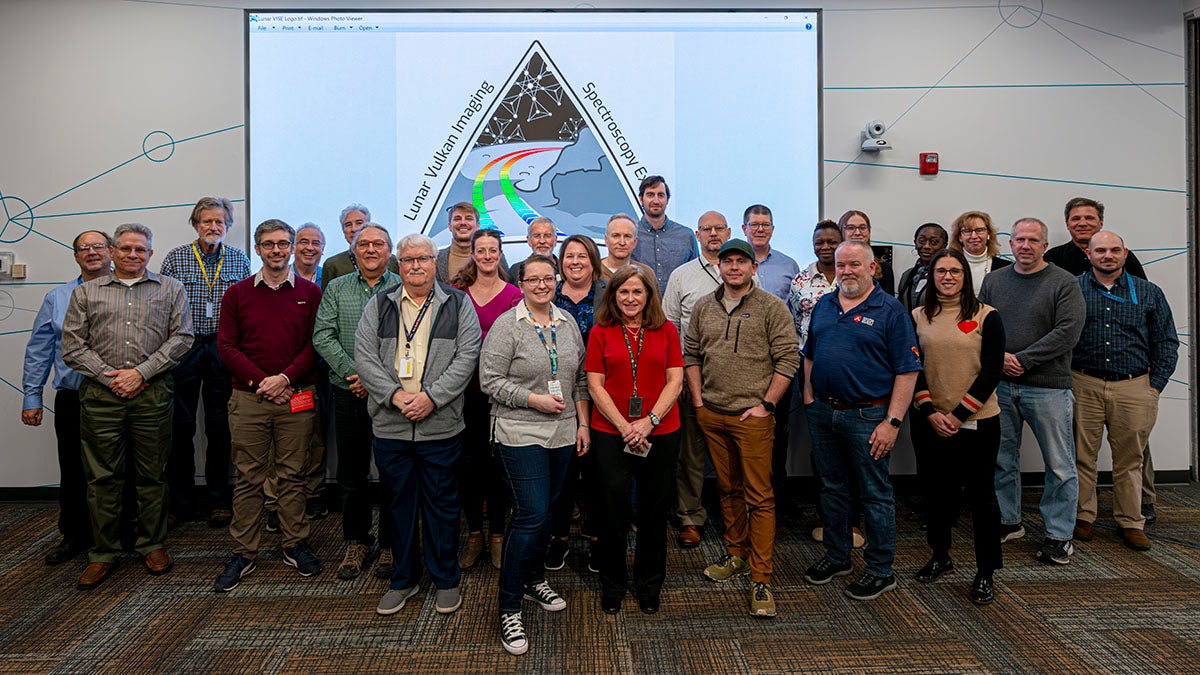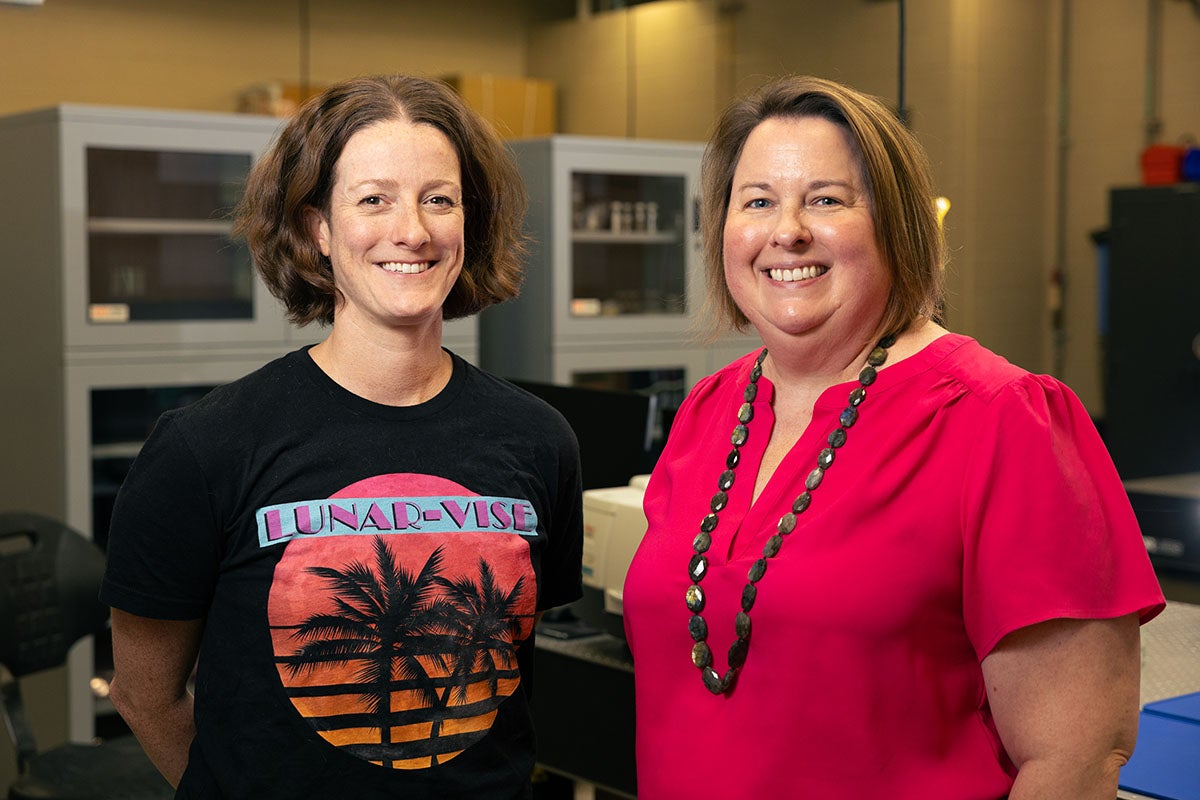In the spring of 2024, NASA’s Lunar-VISE, or Lunar Vulkan Imaging Spectroscopy Explorer, mission passed through two critical milestones on its continued successful path to the Moon in 2027. Lunar-VISE is a NASA Payloads and Research Investigations on the Surface of the Moon (PRISM) program-selected mission.
In late January and early February, the Lunar-VISE team presented the key mission components including the science investigation, landing site and concept for operations at the lunar surface and the status of the instrument design, development and testing to an independent assessment team selected by NASA as part of its Critical Design Review (CDR). The team reached a significant milestone for the mission in passing all 13 review criteria for the key mission components as defined by NASA.
Shortly after the CDR, the team worked with NASA’s Planetary Missions Program Office to present the review’s results and mission progress at a key decision point meeting with Joel Kerns, deputy associate administrator for exploration and lead of NASA’s Exploration Science Strategy and Integration Office. Kerns gave approval to proceed with the mission, which clears the way to continue with hardware development, testing and integration and delivery for launch in 2027.
As part of NASA’s Commercial Lunar Payload Services program, the mission will travel to the Gruithuisen domes where a multi-instrument payload on a lander and rover will measure the compositional and physical properties of dome-forming rocks and regolith (lunar dirt).
The Lunar-VISE mission is led by UCF’s principal investigator Kerri Donaldson Hanna, in collaboration with BAE Systems, Space & Mission Systems (BAE), the University of Colorado Boulder and Arizona State University (ASU). The ASU team, led by Professor Craig Hardgrove, is providing the gamma-ray and neutron spectrometer for the Lunar-VISE rover.
“The Lunar-VISE Gamma Ray Neutron Spectrometer (LV-GRNS) instrument is derived from the neutron spectrometer that was developed for the LunaH-Map mission, which launched in November 2022 and successfully collected lunar flyby neutron measurements,” Hardgrove says. “We’re looking forward to continuing instrument development to be able to make these exciting measurements for the first time on the lunar surface.”
The mission’s objective is to study how the domes were formed and provide greater insight on the creation and composition of the lunar surface. Over a 10 Earth day investigation, the instruments built by BAE Systems and ASU will gather data on the mysterious silica-rich rocks making up the volcanic domes and their high concentration of heat producing elements like thorium. This data will determine their viability as resources in future missions and explorations of the lunar surface.
“The most rewarding aspect of passing the critical design review and key decision point milestones is knowing that all the hard work put in by the whole Lunar-VISE team successfully demonstrated that we can work together to build instruments that will accomplish our science and exploration goals at the Gruithuisen domes,” Donaldson Hanna says.
The team is currently working on addressing the independent assessment team’s request for actions to ensure that the instruments are properly designed to survive launch, the journey to the Moon and soft landing and operations at the lunar surface.
Later this year, the team expects NASA to put out the call for proposals from lander and rover providers to softly land the mission at the lunar surface for its investigation.
“The next step for the Lunar-VISE engineers is the building and testing of instruments and for the science team, we will be continuing to characterize our landing site and prioritizing science at the surface,” Donaldson Hanna says.






